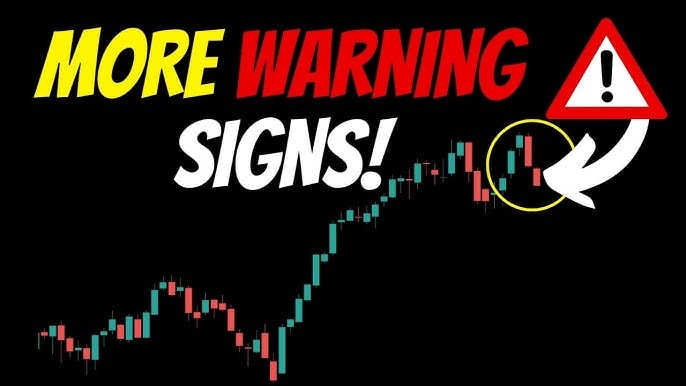Wondering what signs might hint at an impending market burst? Recognizing these red flags can save your investments and sanity. From erratic market swings to telltale investor behaviors, we’ll dive into the key indicators that often precede financial turmoil. Stay ahead of the curve by understanding these warning signals and making informed decisions. Stay educated and informed to tackle the market conditions. You can click here to learn investing from professionals.
Market Instability and Volatility
Market instability often starts with sudden price swings. You might notice a rapid rise in stock prices followed by an abrupt drop. These changes can make even the most seasoned investor uneasy. For example, in 2008, the stock market experienced wild fluctuations before the financial crisis hit.
Another sign is the increase in trading volume. When many investors buy or sell stocks quickly, it can signal panic or irrational exuberance. Think of it like a crowded room where everyone tries to exit at once, causing chaos.
Have you ever heard of the VIX index? It’s often called the “fear gauge.” When the VIX spikes, it suggests that investors expect more market turbulence ahead.
It’s like a storm warning for investors. So, keep an eye on these patterns. They might indicate that a market burst is looming. If you’re uncertain, it’s wise to consult with financial experts to navigate these choppy waters.
Economic Indicators and Trends
Economic indicators often serve as early warning signs for market bursts. Rising interest rates, for instance, can cool down an overheated market. When borrowing costs increase, both consumers and businesses tend to spend less, slowing down economic growth.
Another crucial indicator is consumer confidence. If people feel uncertain about the economy’s future, they’re likely to cut back on spending. This decrease in consumer spending can lead to a slowdown in economic activity. For example, before the 2008 crisis, consumer confidence dipped significantly, hinting at the troubles ahead.
Have you noticed how sometimes employment rates can hint at broader economic trends? A sudden increase in unemployment can be a red flag. When companies start laying off employees, it often signals that they’re preparing for tougher times.
Keeping an eye on these indicators can help you stay ahead of potential market disruptions. Always consider seeking advice from financial experts to interpret these trends accurately and make informed decisions.
Sector-Specific Red Flags
Different industries often show unique warning signs before a market burst. For instance, in the tech sector, overvalued companies can signal trouble. If a company’s stock price is much higher than its earnings suggest it should be, this can indicate a bubble.
Excessive corporate debt is another red flag. When companies borrow too much, they become vulnerable to economic downturns. Think about the real estate sector in 2008. Many companies were heavily leveraged, and when the housing bubble burst, they faced massive losses.
You might also notice industry-specific trends like declining sales in retail or reduced output in manufacturing. These can hint at broader economic issues. For example, if car sales drop significantly, it might suggest that consumers are cutting back on big-ticket items due to economic uncertainty.
It’s essential to monitor these sector-specific signs. They can provide early clues about potential market instability. For more precise analysis, it’s always good to discuss these observations with industry experts.
Investor Behavior and Sentiment
Investor behavior can often hint at an upcoming market burst. When you see a surge in speculative investments, it’s a sign of trouble. Speculative investments are those that carry high risk but offer the possibility of high rewards. During the dot-com bubble, many investors put money into internet companies with little more than a catchy name and a website.
Another sign is widespread fear or over-optimism. Have you noticed how sometimes everyone seems either overly confident or excessively worried about the market? These extreme sentiments can signal that the market is out of balance. For instance, before the 2008 crash, there was a lot of optimism in the housing market, with many believing prices would keep rising indefinitely.
Market trends also show shifts in investor sentiment. If you notice that investors are moving their money out of stocks and into safer assets like bonds, it might indicate a lack of confidence in the market’s future.
Conclusion
Navigating market instability requires vigilance and insight. By keeping an eye on economic trends, sector-specific red flags, and investor behaviors, you can better anticipate potential downturns. Stay proactive, consult with financial experts, and safeguard your investments against unexpected market bursts. Remember, awareness and preparedness are your best tools in maintaining financial stability.


